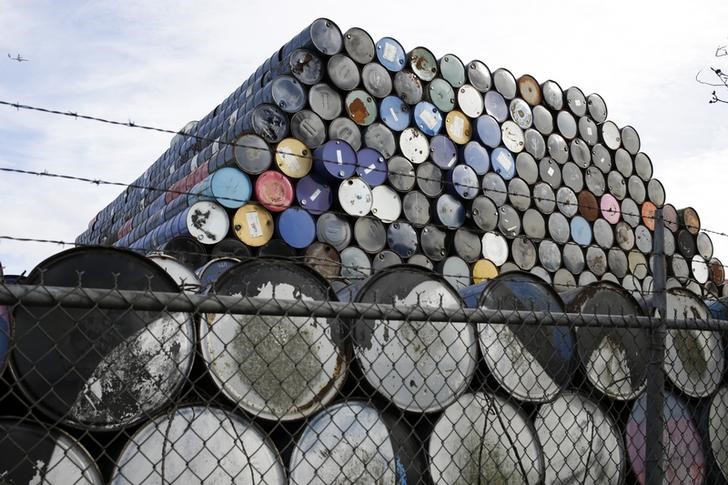Investing.com - In a knee-jerk reaction, West Texas Intermediate oil extended losses in North American trade on Wednesday, after data showed that oil supplies in the U.S. registered a much larger-than-expected inventory build.
Crude oil for March delivery on the New York Mercantile Exchange lost 56 cents, or 1.07%, to trade at $51.61 a barrel by 10:34AM ET (15:34GMT) compared to $51.75 ahead of the report.
The U.S. Energy Information Administration said in its weekly report that crude oil inventories jumped by 13.830 million barrels in the week ended February 3. Market analysts' had expected a crude-stock build of only 2.529 million barrels, though the American Petroleum Institute late Tuesday reported a supply surge of 14.227 million barrels, the second largest in its history.
Supplies at Cushing, Oklahoma, the key delivery point for Nymex crude, increased by 1.143 million barrels last week, the EIA said. Total U.S. crude oil inventories stood at 508.6 million barrels as of last week, according to press release, which the EIA considered to be “near the upper limit of the average range for this time of year”.
However, the report also showed that gasoline inventories decreased by 0.869 million barrels, compared to expectations for a build of 1.071 million barrels, while distillate stockpiles grew by only 0.029 million barrels, compared to forecasts for a gain of 0.300 million.
Elsewhere, on the ICE Futures Exchange in London, Brent oil for April delivery dropped 42 cents, or 0.76%, to $54.63 by 10:37AM ET (15:37GMT), compared to $54.76 before the release.
Meanwhile, Brent's premium to the WTI crude contract stood at $3.01 a barrel by 10:38AM ET (15:38GMT), compared to a gap of $2.88 by close of trade on Tuesday.
Futures have been trading in a narrow range around the mid-$50s over the past month as sentiment in oil markets has been torn between hopes that oversupply may be curbed by output cuts announced by major global producers and expectations of a rebound in U.S. shale production.
U.S. drilling activity has risen by more than 6% since mid-2016, taking it back to levels seen in late 2014, when strong U.S. crude output contributed to a collapse in oil prices.
The revival in U.S. drilling has raised concerns that the ongoing rebound in U.S. shale production could derail efforts by other major producers to rebalance global oil supply and demand.
Indeed, the Energy Information Administration said that the U.S. will pump the most crude next year since 1970, as OPEC cuts lift prices and benefit domestic producers.
OPEC and non-OPEC countries have made a strong start to lowering their oil output under the first such pact in more than a decade as global producers look to reduce oversupply and support prices.
January 1 marked the official start of the deal agreed by OPEC and non-OPEC member countries such as Russia in November last year to reduce output by almost 1.8 million barrels per day to 32.5 million for the next six months.
The deal, if carried out as planned, should reduce global supply by about 2%.
According to recent reports, OPEC compliance with the deal stood at 91%, but as expert in the global energy industry Ellen R. Wald, Ph.D. remarked, “The real test for
OPEC will be whether these cuts are reflected in higher oil prices throughout the six-month period of the deal.”
In that light, oil ministers for Iran and Qatar said on Wednesday that OPEC and other major crude-producing nations may need to extend output cuts into the second half of the year to re-balance the market, although they both said it was too early to judge if it would be necessary.
